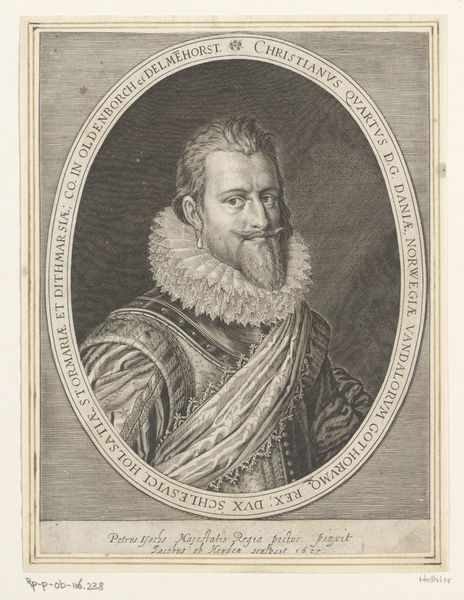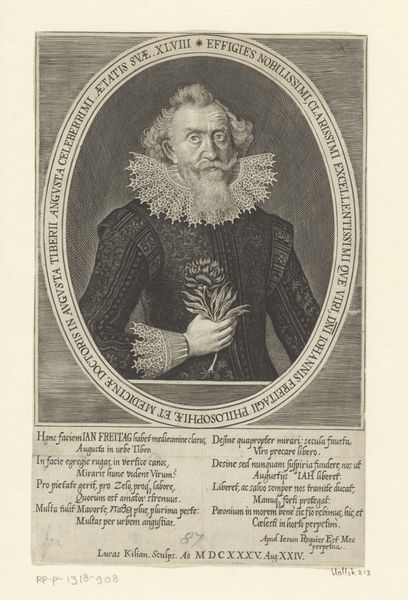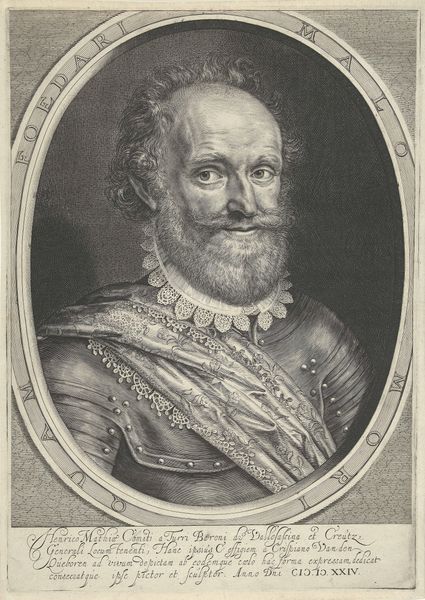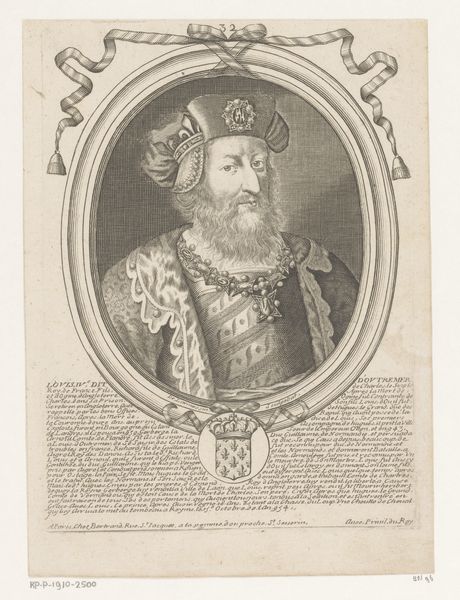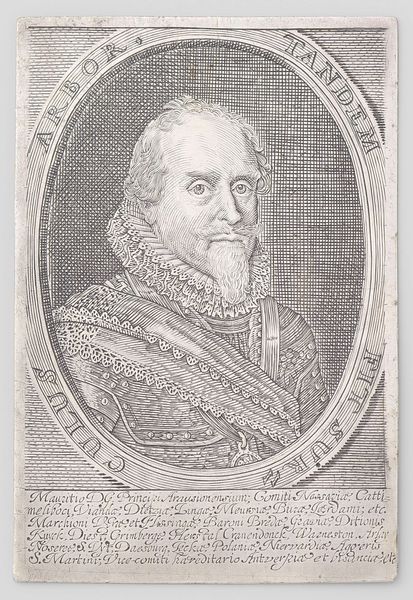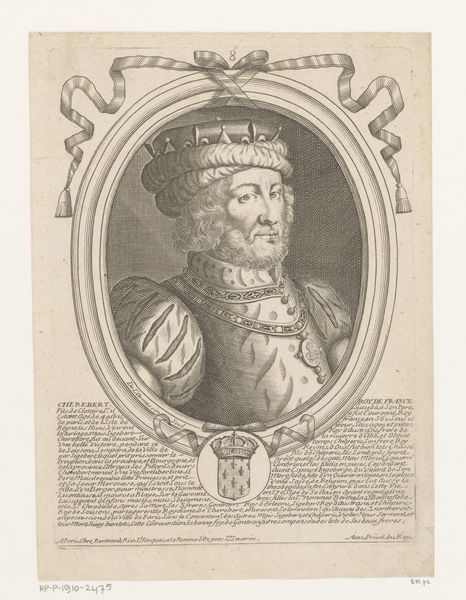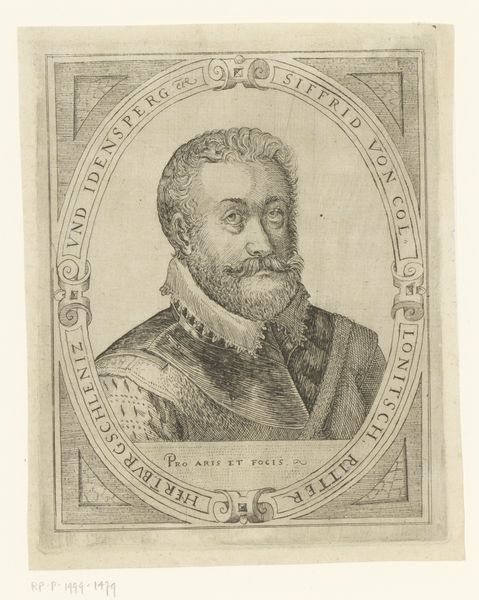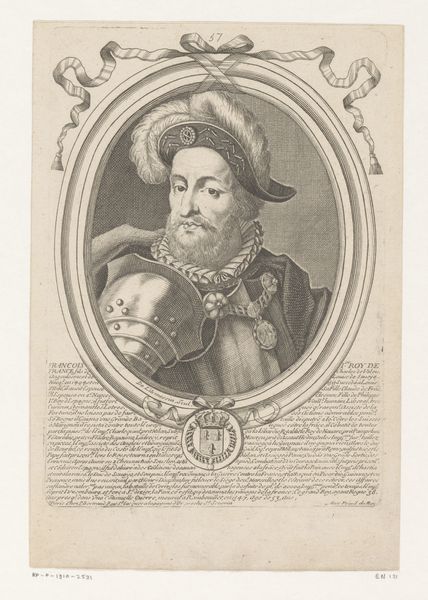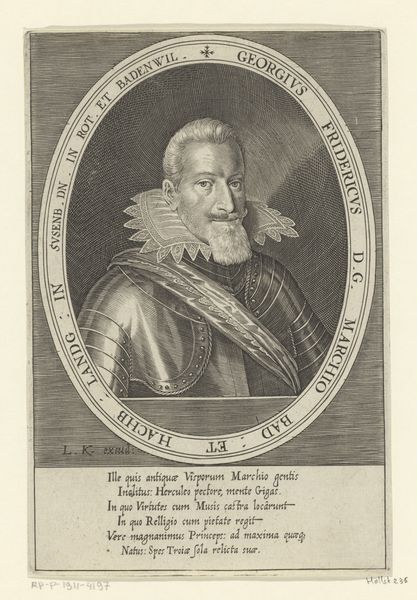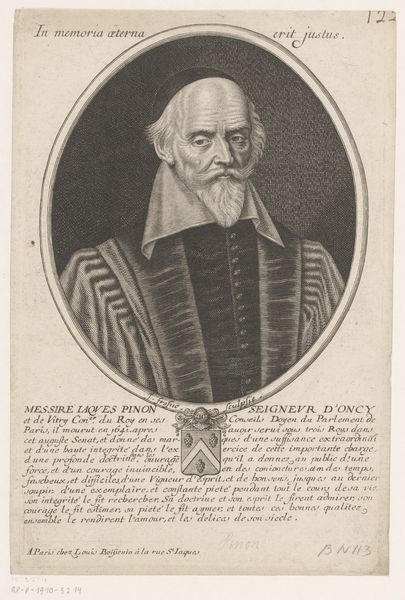
Portret van Hendrik IV, koning van Frankrijk en Navarra 1642 - 1694
0:00
0:00
nicolasdeilarmessin
Rijksmuseum
print, engraving
#
portrait
#
baroque
# print
#
old engraving style
#
history-painting
#
engraving
Dimensions: height 230 mm, width 169 mm
Copyright: Rijks Museum: Open Domain
Editor: This is a portrait of Hendrik IV, King of France and Navarra. It’s an engraving, made between 1642 and 1694 by Nicolas de Larmessin, and is now at the Rijksmuseum. The intricate detail is amazing. It feels very formal, regal. What's your perspective on it? Curator: What I see is not simply a royal portrait, but a carefully constructed piece of propaganda designed to cement Henri IV's legacy. Think about the context: created decades after his death during a period of immense religious and political upheaval. The baroque style lends it grandeur, but the real message lies in its details. Notice anything interesting about his clothing, or the text framing the portrait? Editor: He’s wearing a very ornate ruff and sash with what looks like a cross hanging from it. The text is difficult to read but there's a coat-of-arms as well. It feels like it is emphasising his importance, doesn't it? Curator: Exactly! The cross likely references the Order of the Holy Spirit, associating him with religious authority, even though his reign was marked by religious conflict. Consider how the artist strategically employs symbols of power to project an image of stability and divinely ordained leadership. How does this image contribute to a larger historical narrative, do you think? Editor: Well, I suppose it reinforces the idea of the King as a strong and legitimate ruler, legitimizing the monarchy even after periods of conflict and questioning of its authority. It is attempting to fashion and burnish his image for posterity. Curator: Precisely. And by extension, it tells us something about how rulers try to control the historical narrative about themselves. It's a visual statement crafted to persuade. What do you make of that now? Editor: It is more than just a pretty picture. It is like a very carefully curated Instagram account designed to shape our perception of history. Thanks, I'm looking at it differently now. Curator: That's right. Art doesn't exist in a vacuum. Exploring these contexts opens up avenues to critical and interdisciplinary understandings, highlighting art's potent interplay with social, cultural, and historical forces.
Comments
No comments
Be the first to comment and join the conversation on the ultimate creative platform.
